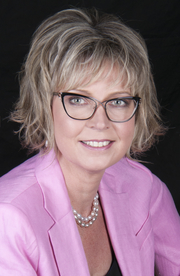LN Feature: Choice in education is worth our attention

—
LN: So, you had a piece published in the Hamilton Spectator earlier this month talking about education funding in Ontario. First,. some background. This was in response to another op-ed on funding for Catholic Schools, correct?
DvP: That’s right. The piece that came out was… Patrick Daley was talking about the difference in the amount of funding that the government grants to students that are in Roman Catholic schools; so these are public Roman Catholic Separate schools. We always consider the as “fully funded Roman Catholic Separate schools”, but Patrick was talking about some of the data for three boards in Ontario. And it turns out that the student in those public Catholic schools – the funding that follows them – is a little smaller than the funding that follows students, on average, to the public schools.
So we did some calculations, and it’s clear that if that difference – $250 dollars or something like that per student – if that difference played itself out across the province, there is a savings to taxpayers of over $140-million dollars across the province.
LN: So for listeners in the rest of the country, Ontario is the only province outside of the Maritimes that doesn’t fund independent schools. Yes, they fund the Catholic ones, but not the others. And the math inherent in that is also significant.
The parents who choose options other than government-funded public or Catholic Schools in Ontario are saving the taxpayer – by your estimation – about $1.7 billion dollars?
DvP: Well, we have over 136,000 students in the province of Ontario that are either in independent schools – and as you rightly have indicated, they receive no government funding – and the students that are home schooled across the province of Ontario. The official enrollments are 6,500, but we do know that there are even more home schooled students than that in the province. So taken all together, and looking at the average spending per student in a public school in Ontario, it’s over $12,000 dollars per student. So multiply that by the number of students in the province – it’s over 6.1% of students in the province that do not attend public schools – it’s a tax savings of $1.7 billion (dollars.)
LN: I don’t know how much research you’ve done on other provinces, but I’ve seen numbers for Alberta and BC for example – where part of the operational budgets for independent schools are funded,. no money for capital – but these numbers that seem to show that every time parents choose to educate their kids outside the government system, there’s a big saving involved for provincial education budgets. This isn’t just in Ontario. Can you comment on that, in terms of the savings that are inherent in that system?
DvP: Absolutely. You’re quite right. In the four western provinces – from Manitoba to British Columbia – and as well in Quebec, there is partial government funding, and the funding goes to the school, for the students that attend independent schools. Now this ranges from 35% for some of the independent schools in British Columbia to up to 70 or even 80% for a few anomalous independent schools in Saskatchewan. On average, between 50 and 60% of what’s given to the local public school for operating expenses. That would follow the student to an independent school in those provinces where the funding’s available. Indeed the schools do still have to provide all of the funding for the capital at the school. So it turn out that it’s not half of what it costs to educate a student that is government-funded.
LN: And yet, we continue to see some sectors of society – I’m thinking of “Progress Alberta” for example, and some teachers unions – we see these groups demand that government cut all funding to independent or private schools because they’re “elitist.” How do we respond to this?
DvP: Well certainly this is a very interesting point. It’s an important question: “Are all independent schools elite, private schools?” And the answer is “No, they are not.” There’s different ways of defining what an “elite private school” would be. One study from the Fraser Institute in British Columbia defined elite private schools where the tuition per student is at a certain amount or above. And it turns out that in no province would more than 20 percent of the students who attend independent schools be in an elite private school. It means that the vast majority of the independent schools in every province across the country (are) not.. elite institution(s), and (they) do not serve elite sorts of families.
Some of the data that the Fraser Institute has released recently has found that in British Columbia the average household income for families that are choosing these non-elite – they’re mostly religious (Sikh, Hindu, Jewish, Muslim, Christian, Catholic and other religious independent schools) – the household incomes are very similar to the average household income of families that choose public schools. In British Columbia, that difference is a household that comes between $77,000 (for public-schooling families compared to) $78,000 for the independent schools. In Alberta, it turns out that the average public school family actually has a slightly higher household income than families who choose the “non-elite” independent schools in Alberta. So we absolutely must lost our stereotypes about independent schools being elite schools and about the parents in families that choose those schools as being elite and in some way very, very different from families that are choosing public schools.